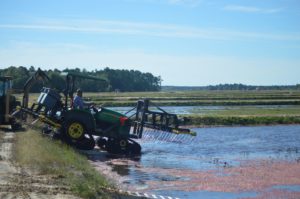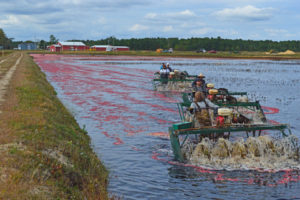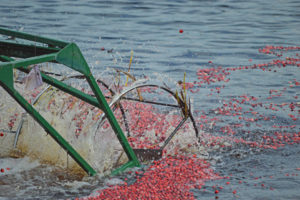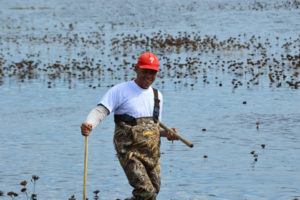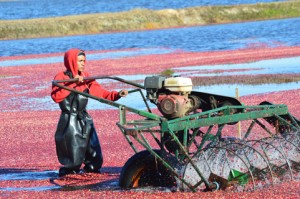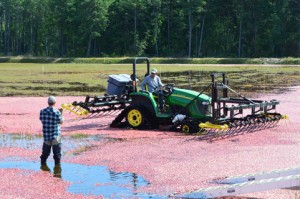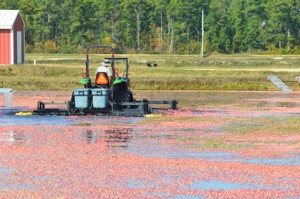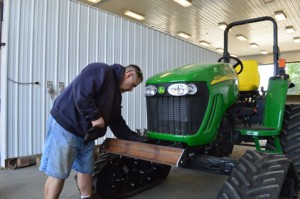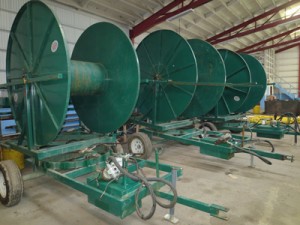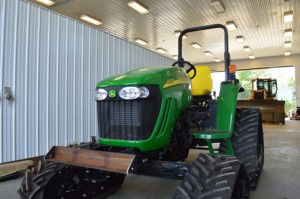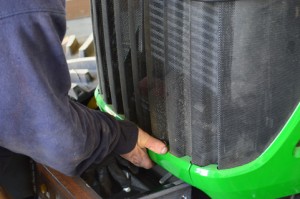In the time since we launched this site, our team has improved many of our processes in the interests of efficiency. The most visible changes, of course, have been to our harvest methods.
Since the 60s, when Bill Haines, Sr. moved entirely to water harvesting, we’ve been using the reel harvesters. Since 2014, however, as our team continues to renovate older beds to improve drainage and yield, we’ve been relying more and more on the Gates Harrow. The Gates Harrow is not as hard on the plants as the reel harvesters, and our renovation program is geared for increased efficiency by being user-friendly for equipment like this. But there are still older beds in the center of the farm that are easier to pick using the former method.
When it comes to picking with the reels, there’s a lot to think about; it’s not as easy as just putting the machines in the water. There’s a method to it in order to keep from damaging the fruit or the vines. The difficulty fluctuates slightly due to bog size, weeds, and terrain, as well as other variables such as water levels, crop size, and even berry variety. Some berries do not float to the surface as easily and remain under the vine canopy, which is why they stagger machines in the water in order to both maximize yield and minimize damage to the vines. Each bog is picked in a specific pattern according to terrain, and the picking crew has to carefully move their harvesters around stakes which have been arranged for maximum operational efficiency. Following this pattern allows for minimal damage to the vines. The crew leader also needs to stay ahead of his crew and check for ditches, for everyone’s safety.
The Gates Harrow is a simple machine set up to cover more ground. At the front is a rod which holds vines down to the ground; as the tractor moves forward, the berries pop off the stems and roll up over the tines on the rake. It’s not as hard on the plants as our usual method, and our renovation program is geared for increased efficiency by being user-friendly for equipment like this. It also picks a lot cleaner; it knocks almost everything off the vines. With the standard reels you’ll still find some berries left here and there. There are also some fuel savings with just one tractor running. It’s also less labor intensive; we typically run a six man picking crew and their target is about 12.5 acres per day. On a more level set of bogs, they can do more than that, but with a Gates Harrow a two-man crew can get through 40 acres. It’s a lot more efficient.
GoPro Gates Harrow from Pine Island Cranberry on Vimeo.
With the majority of our older bogs finished, we’re looking to make a strong finish with the harrows in the next week or so!

